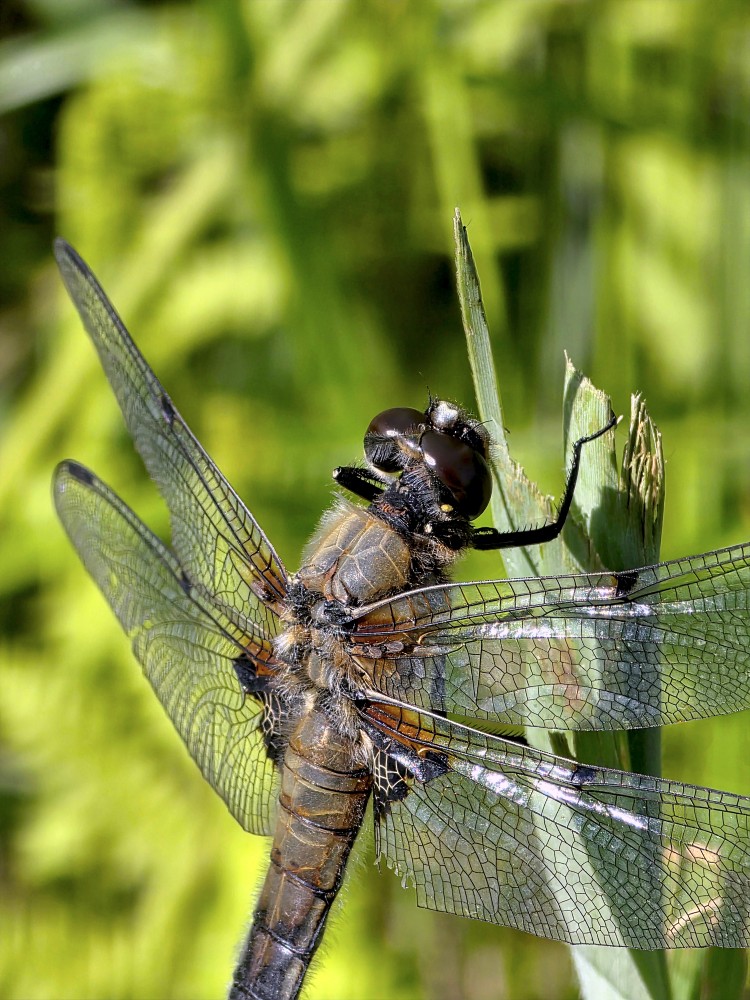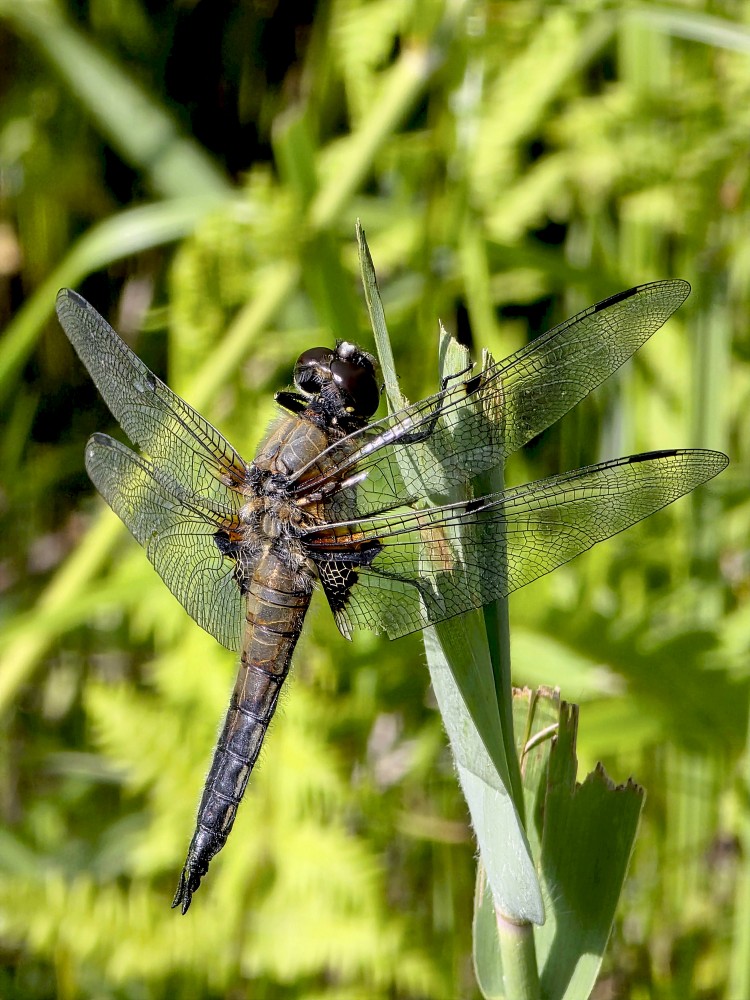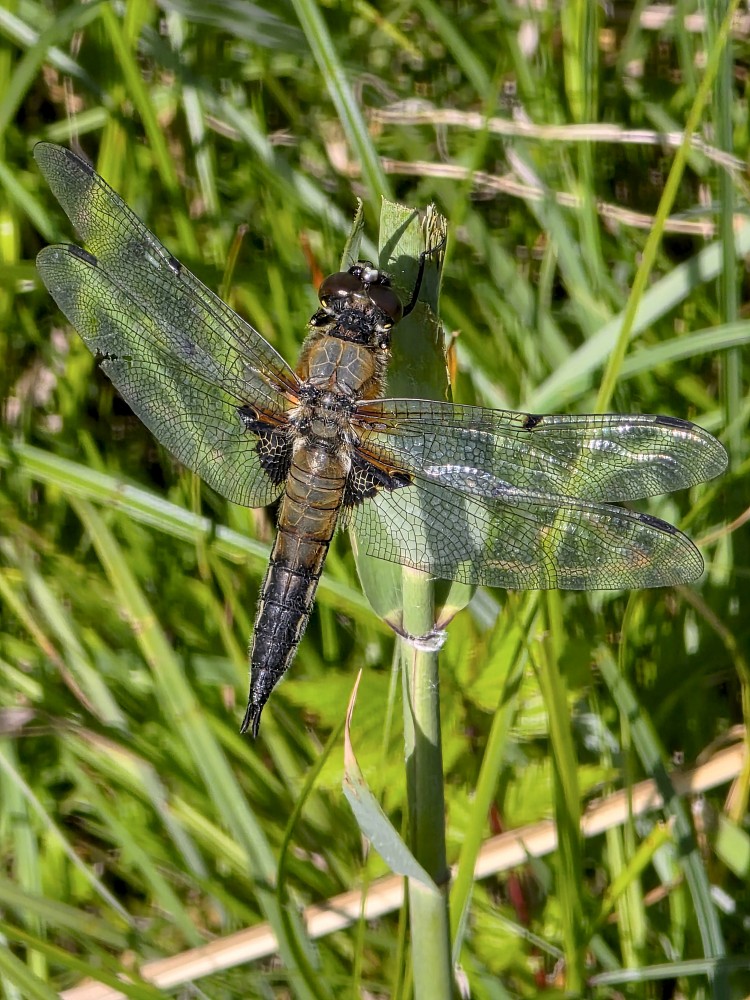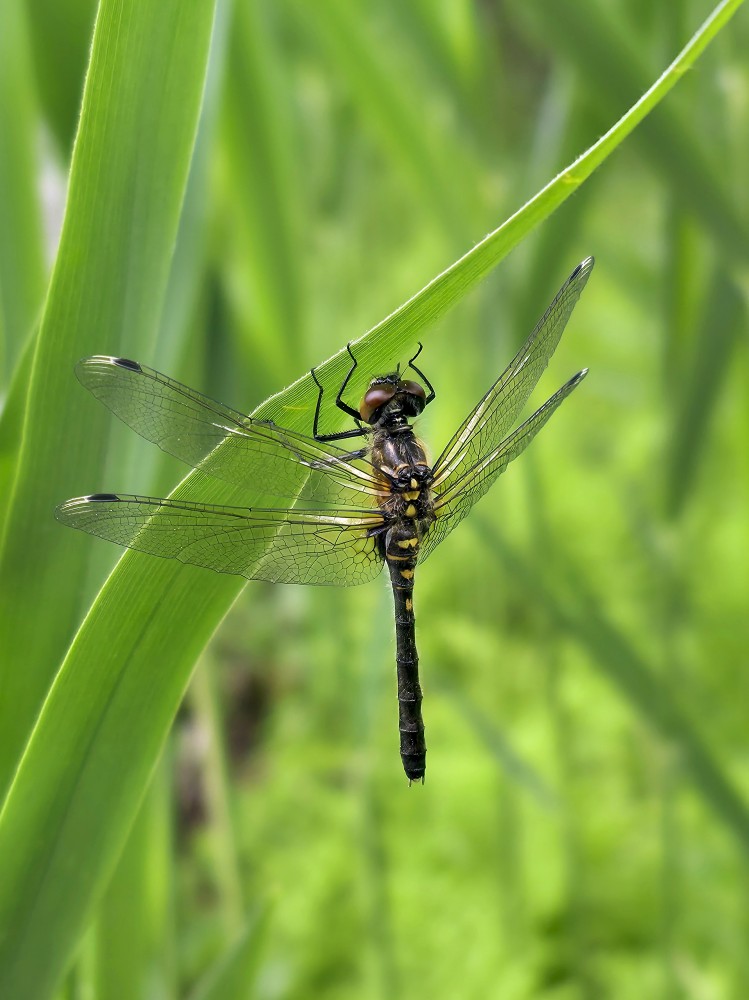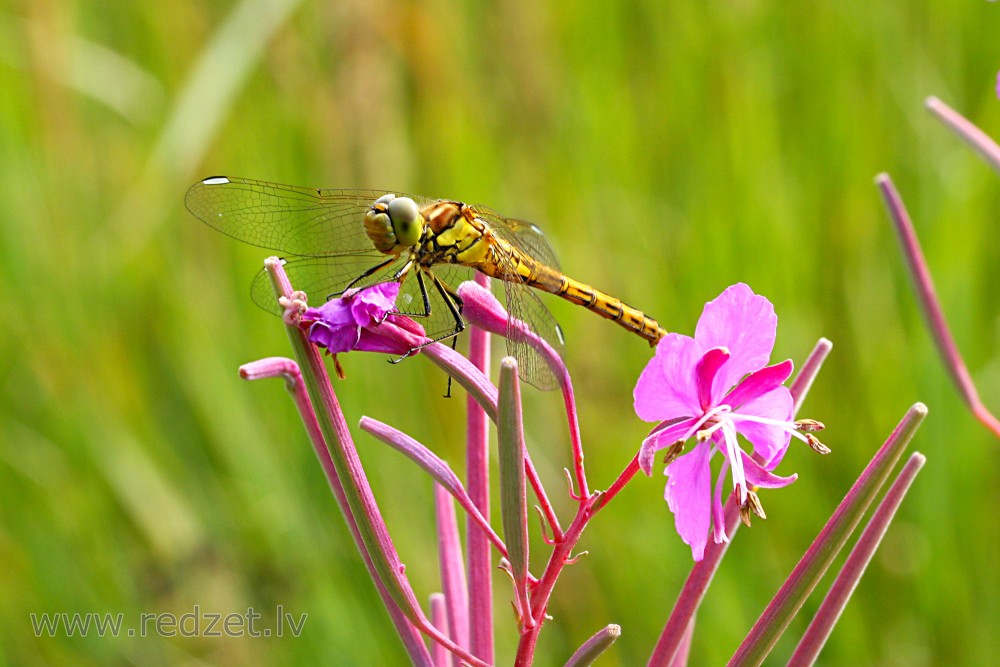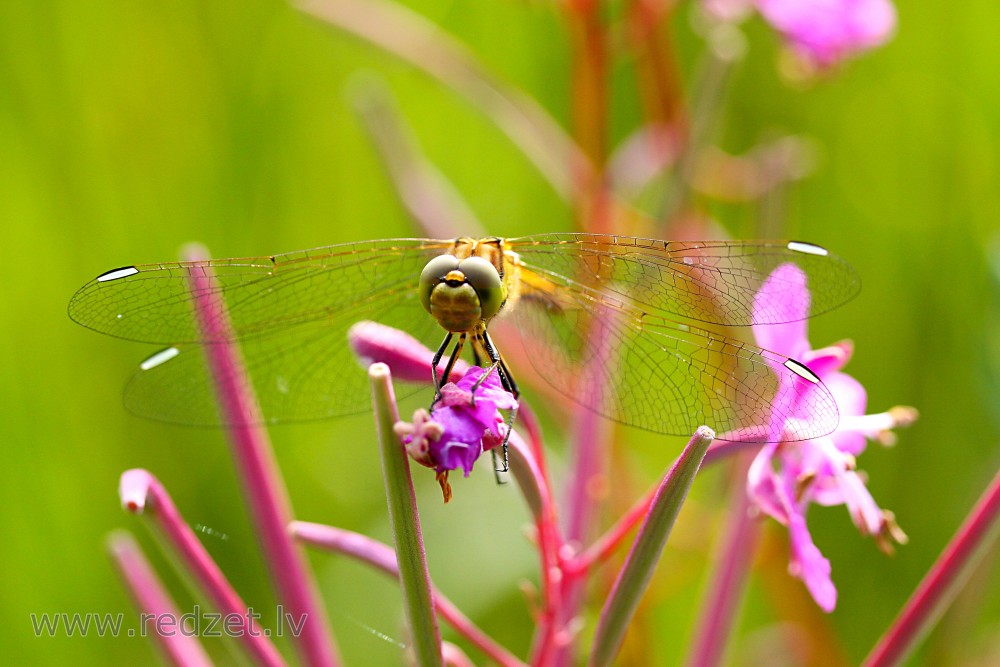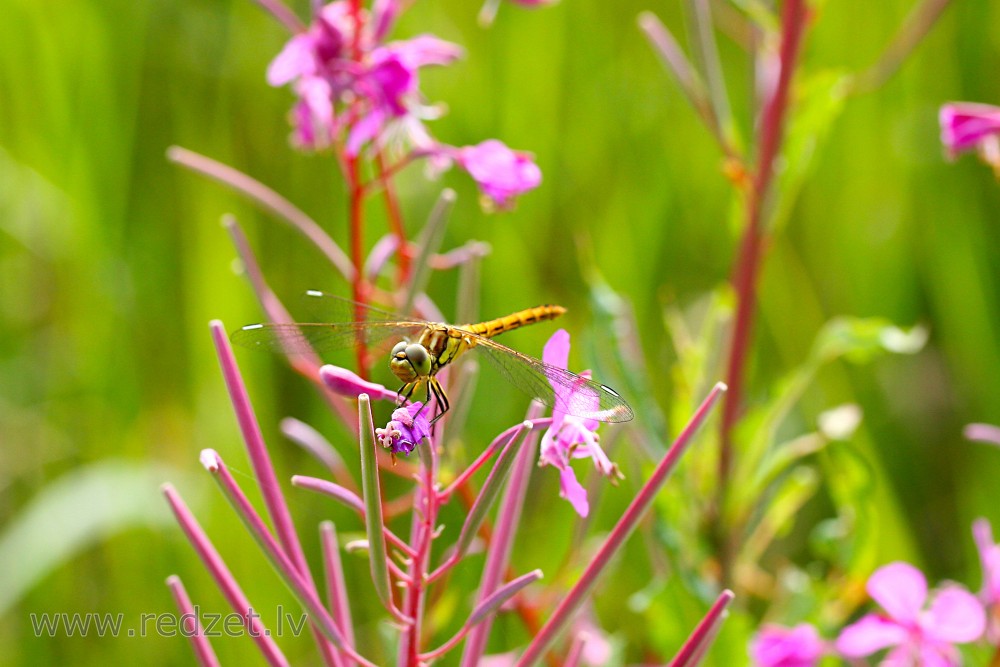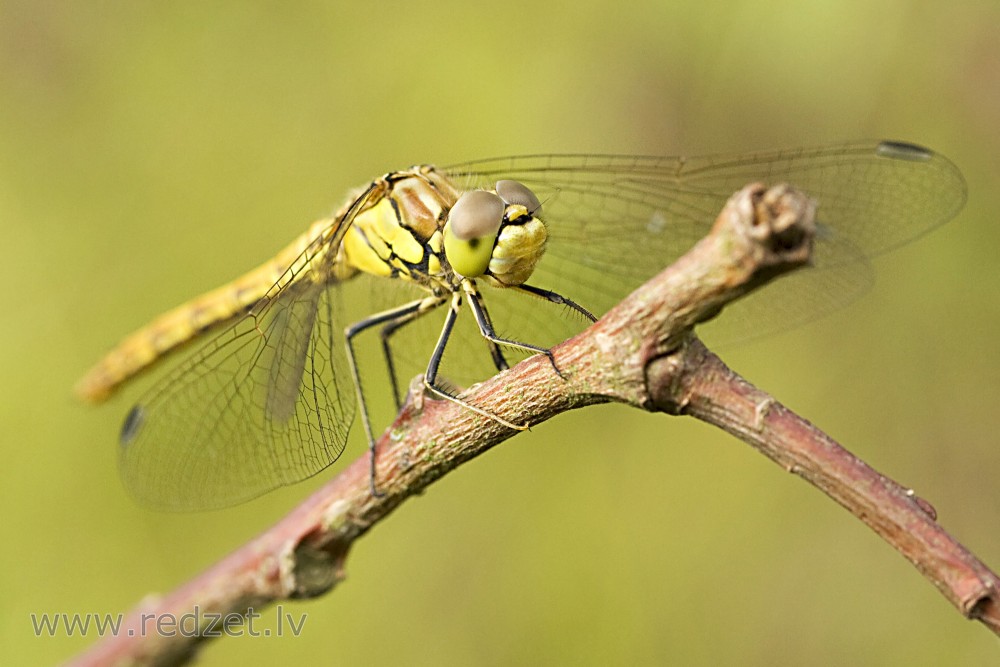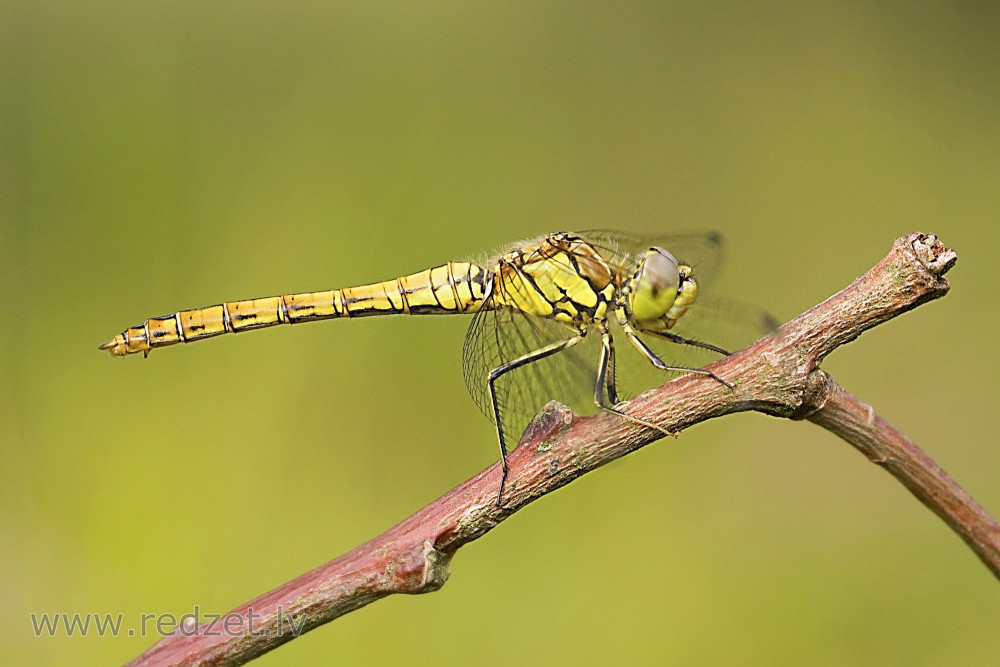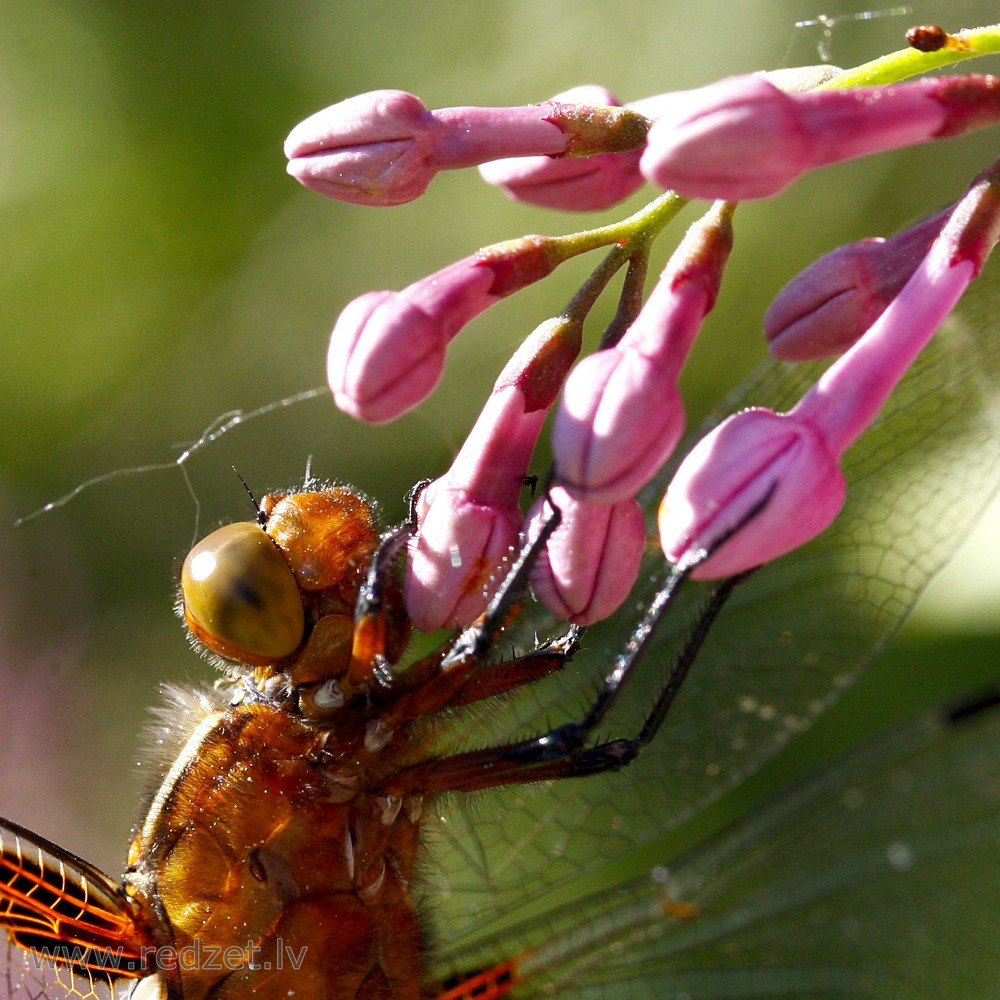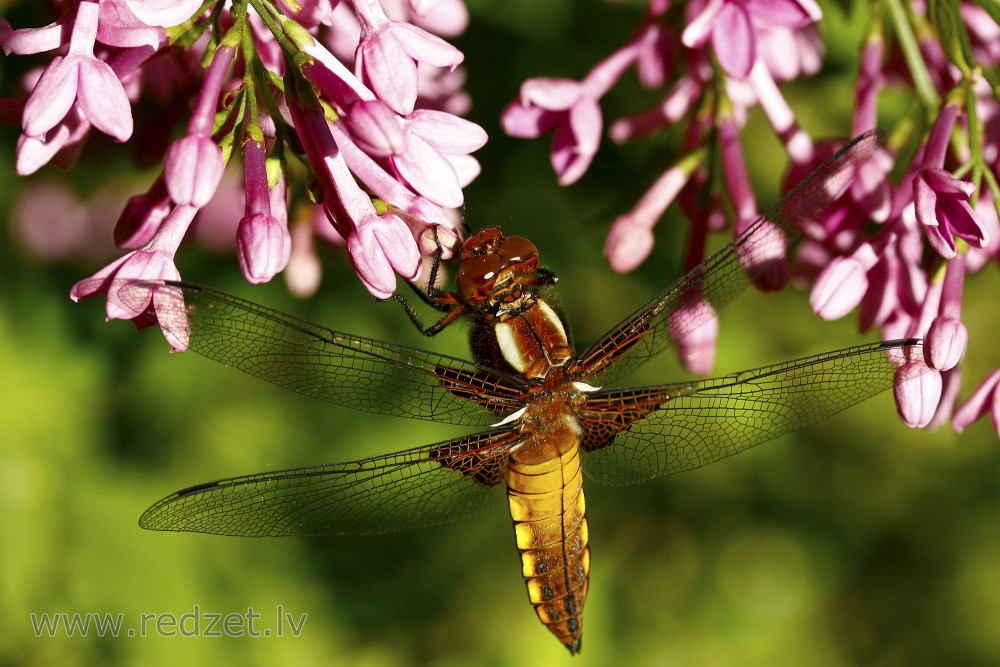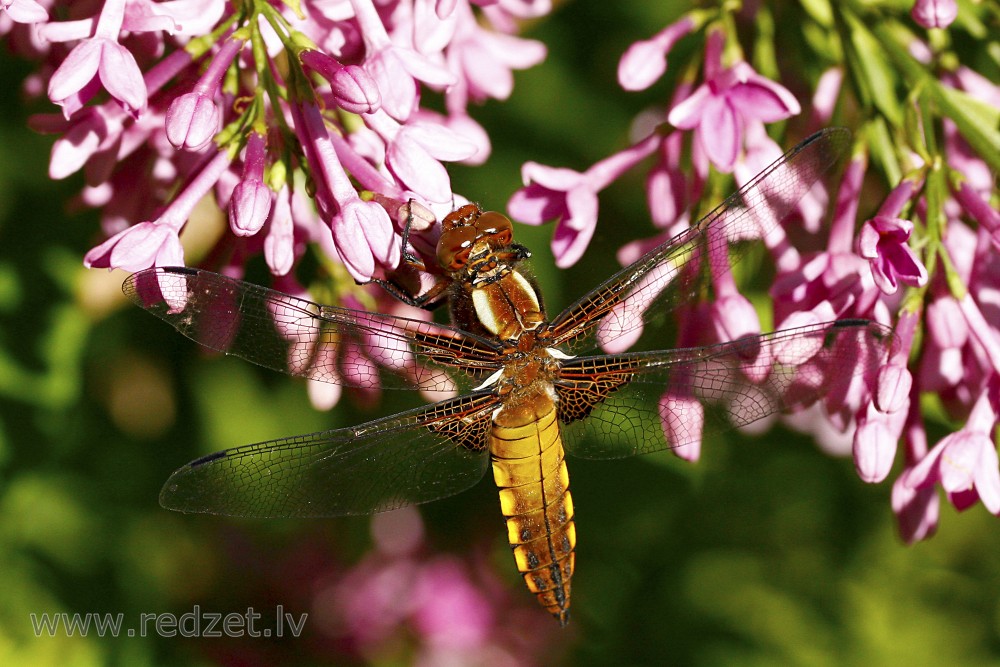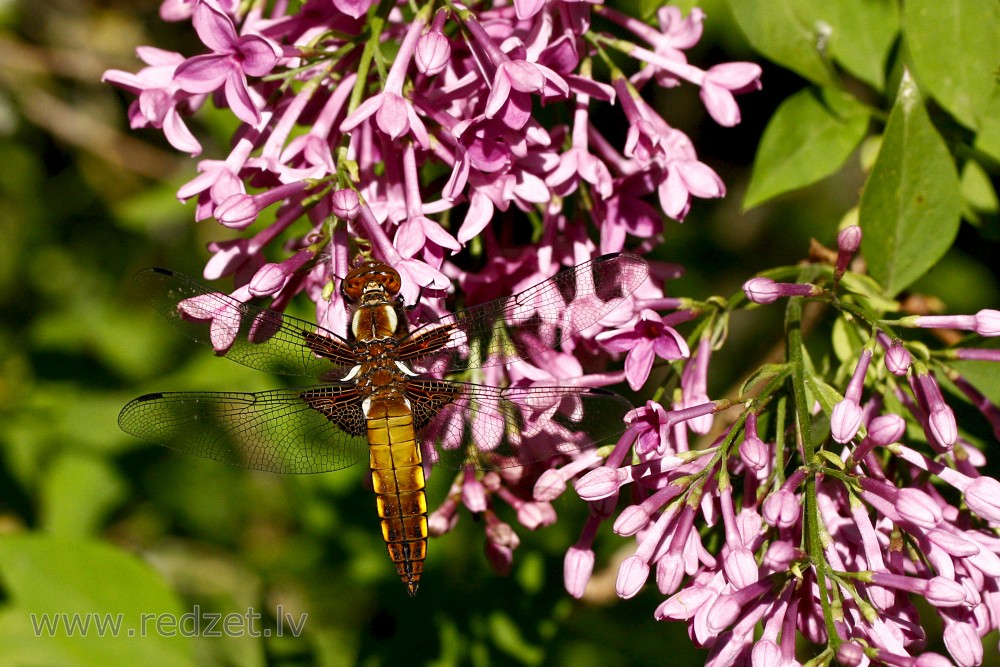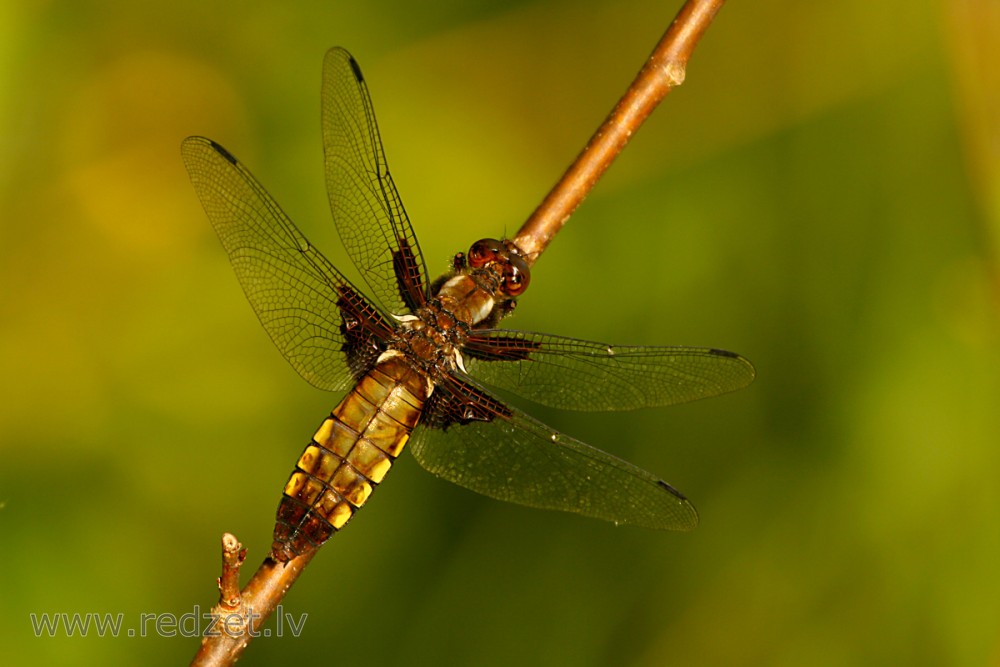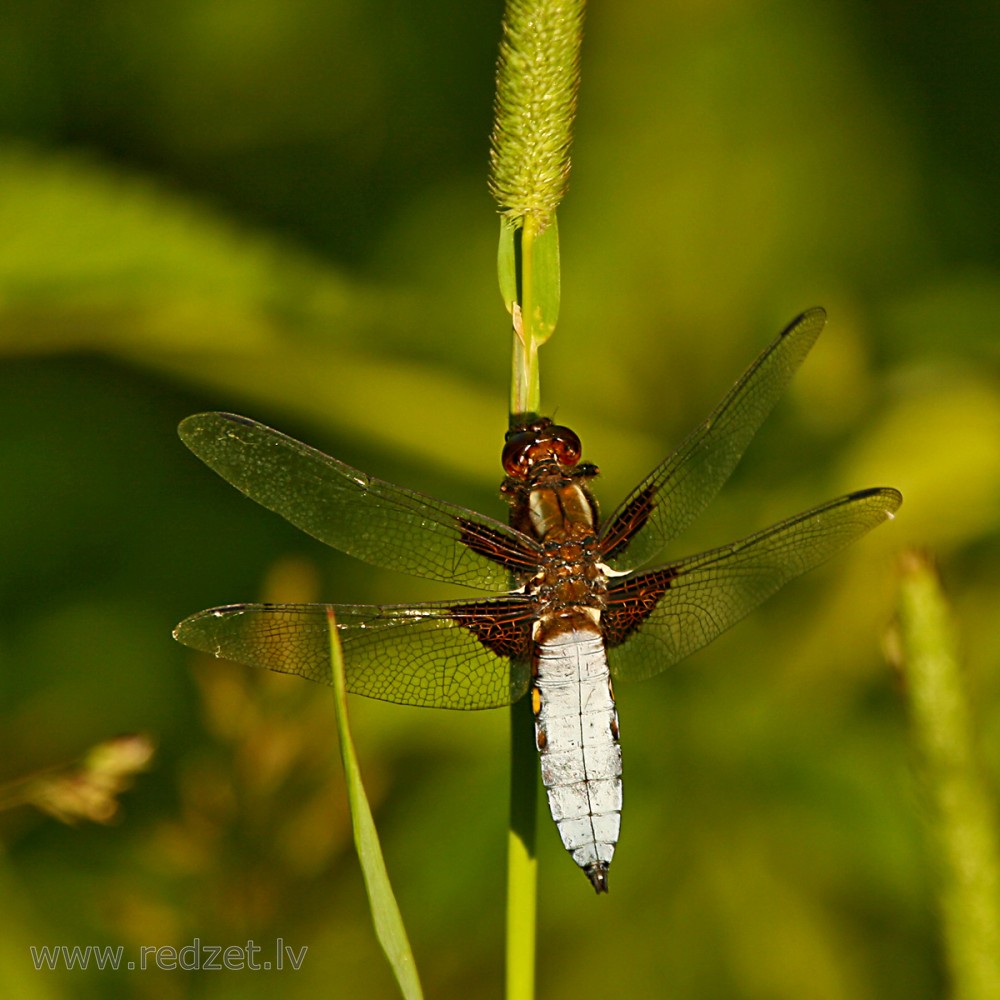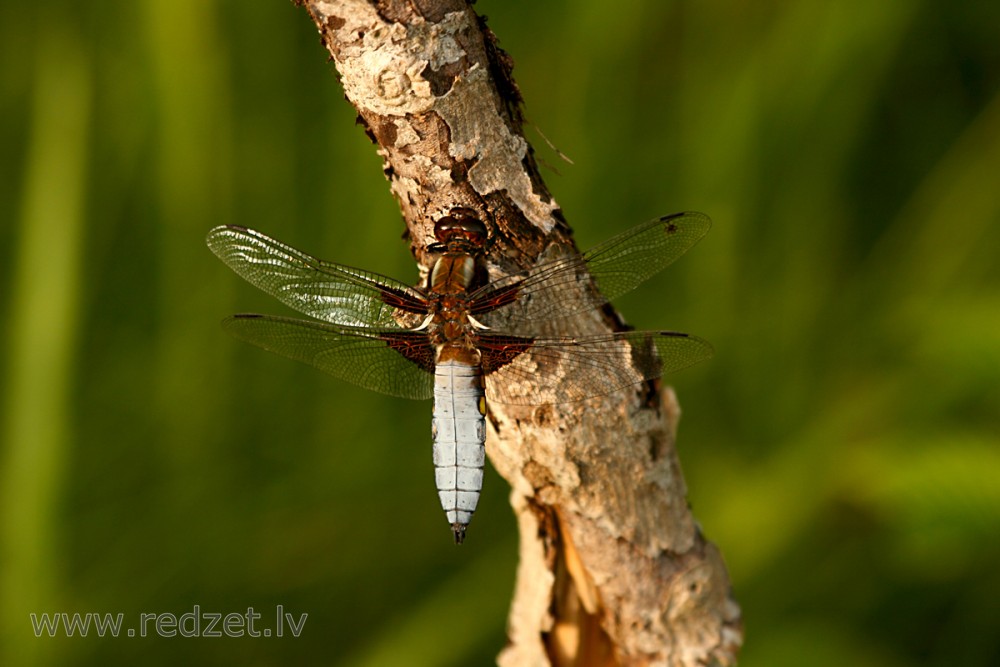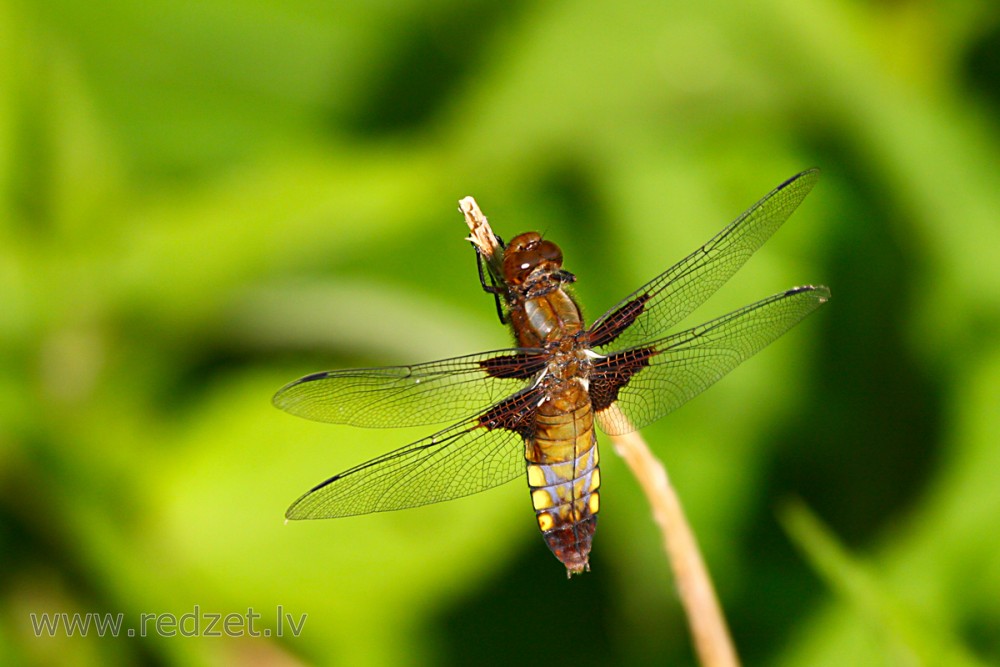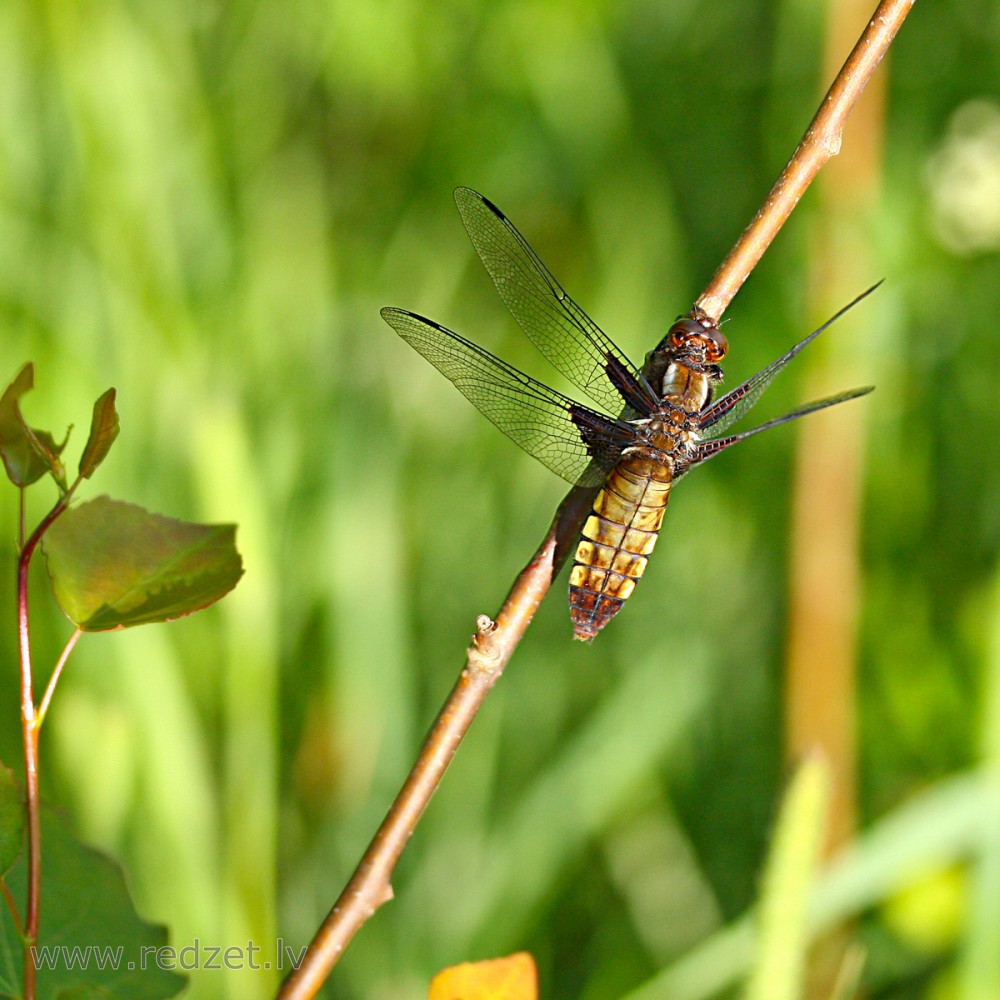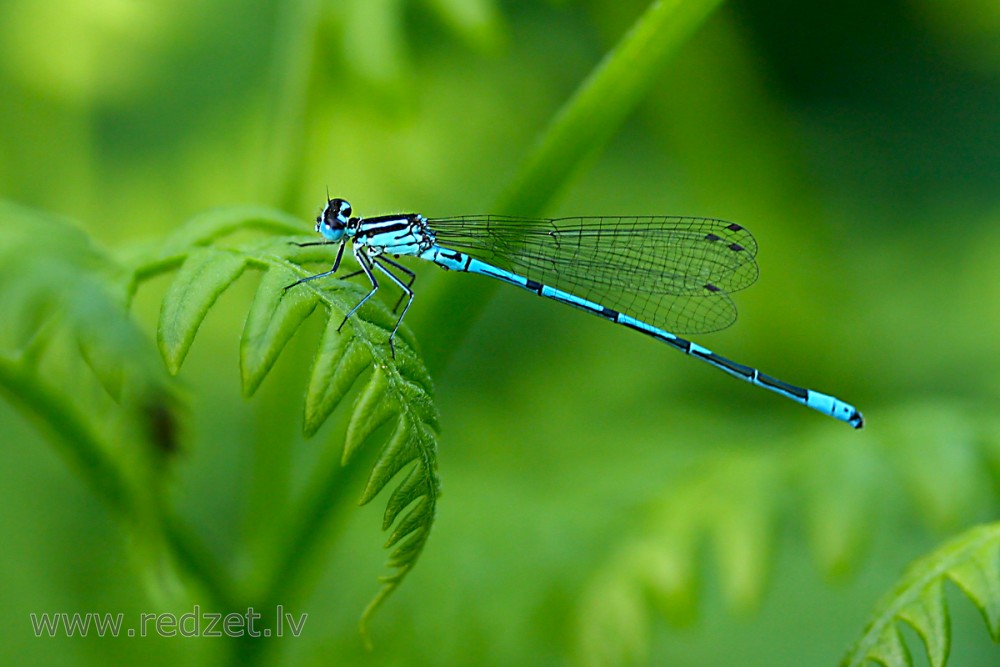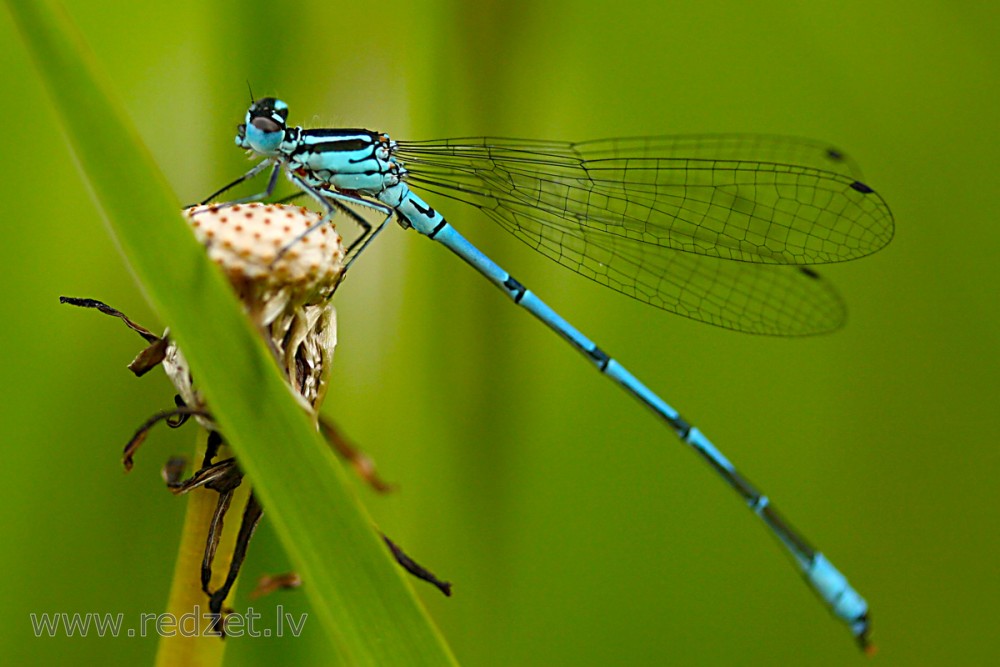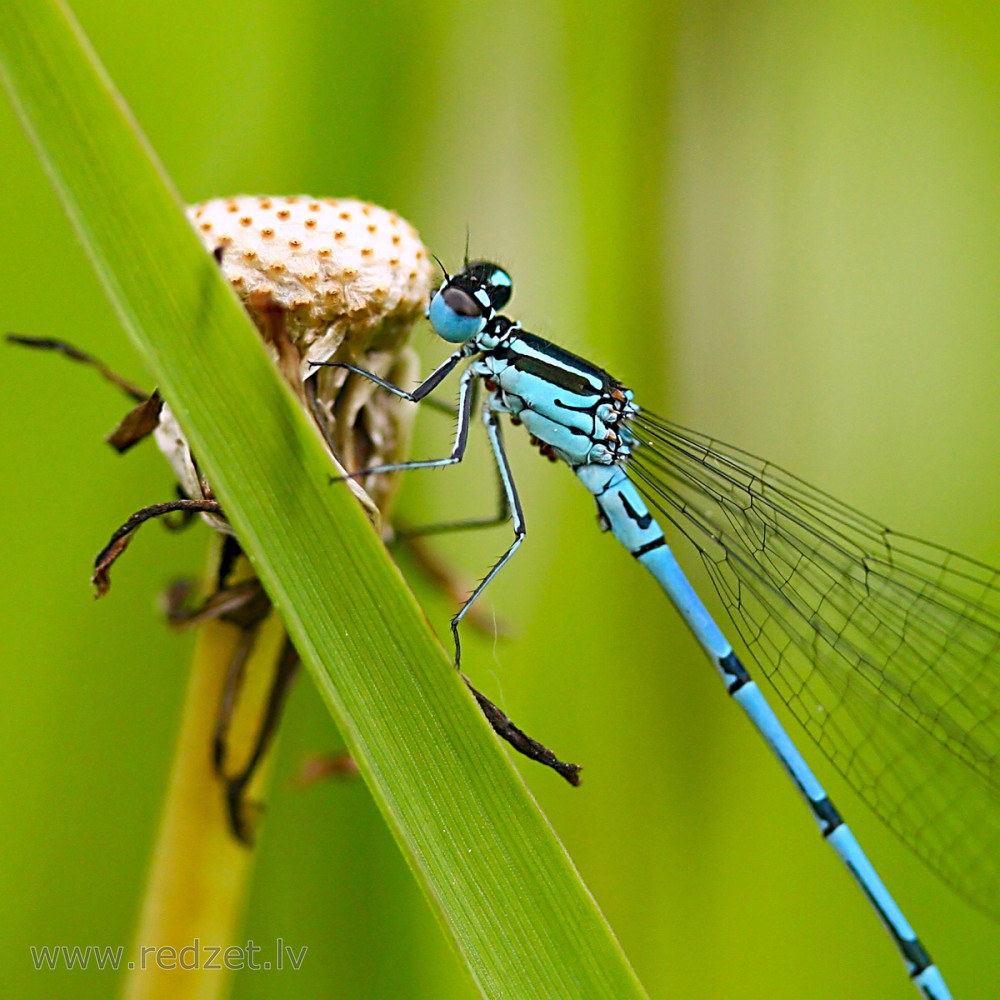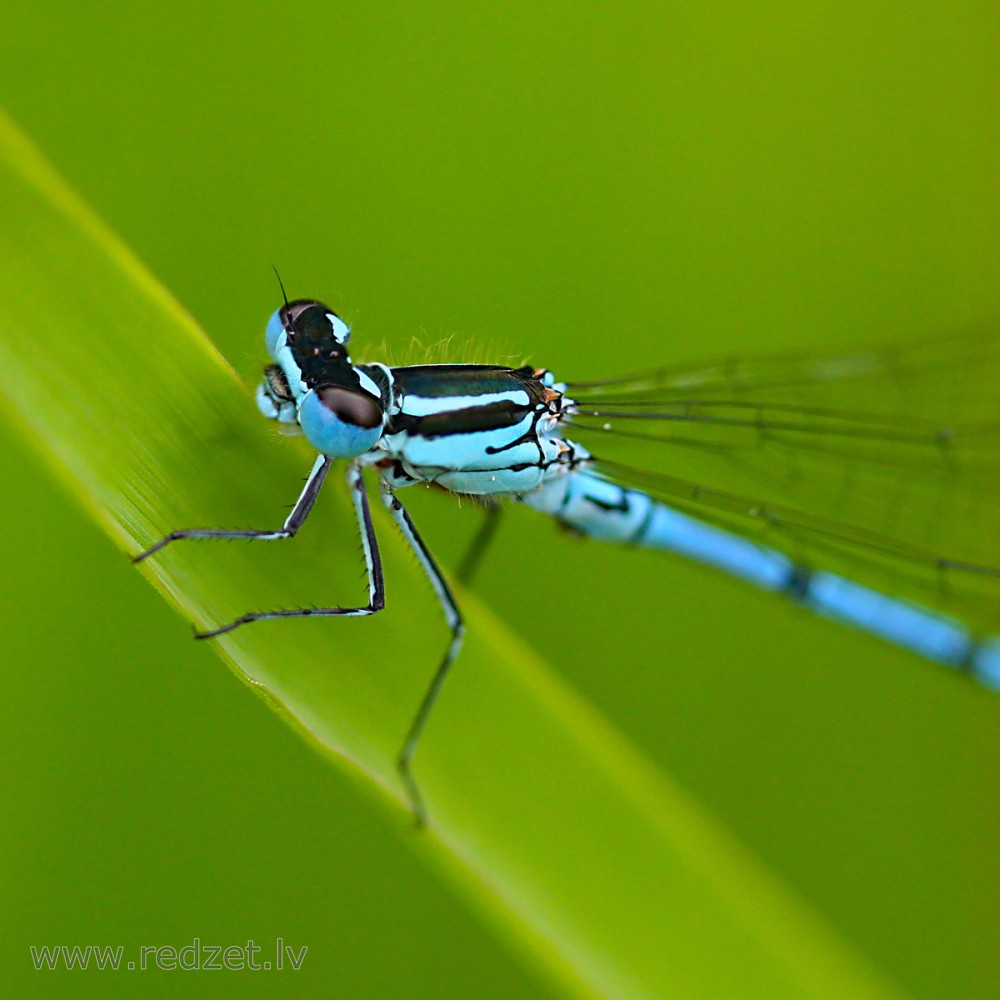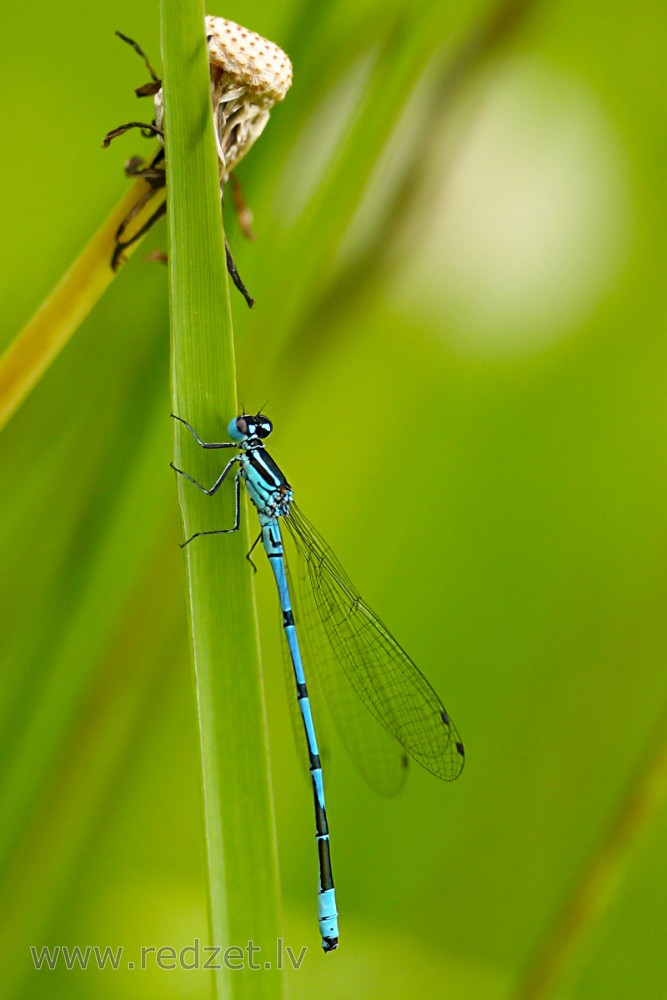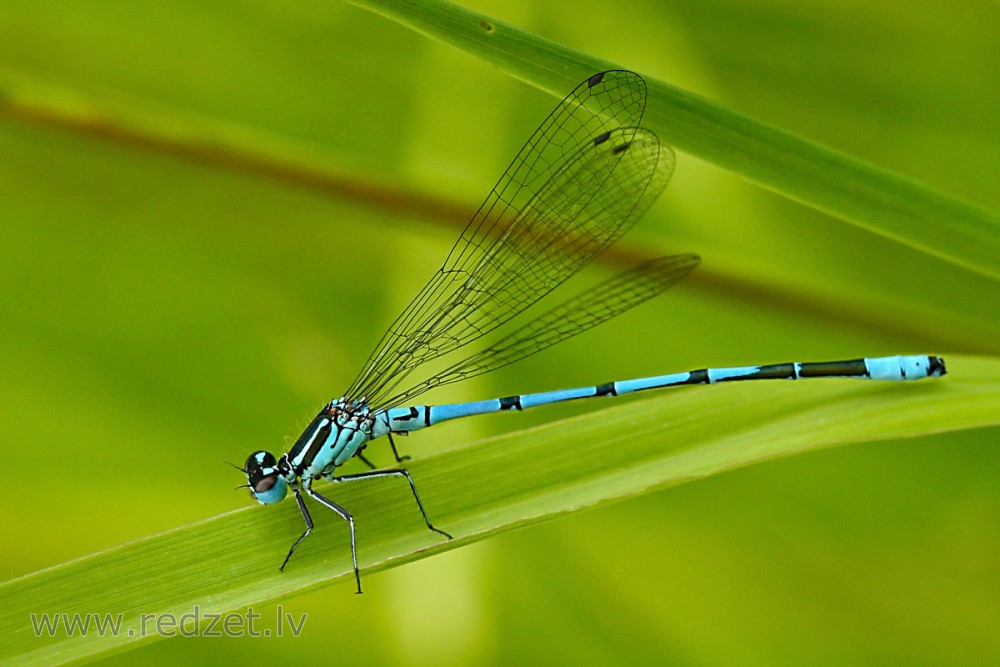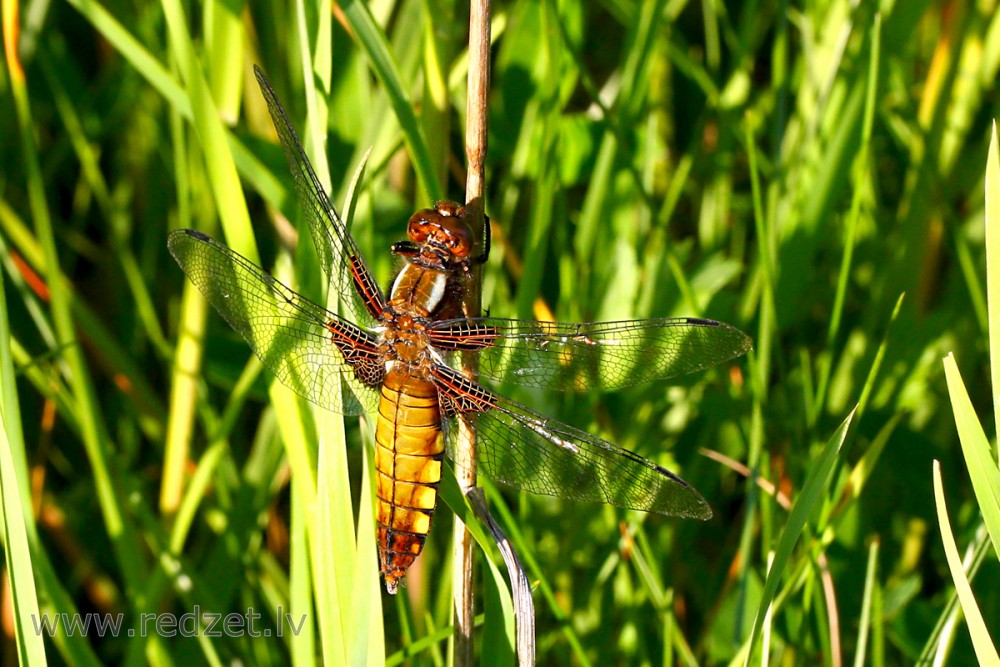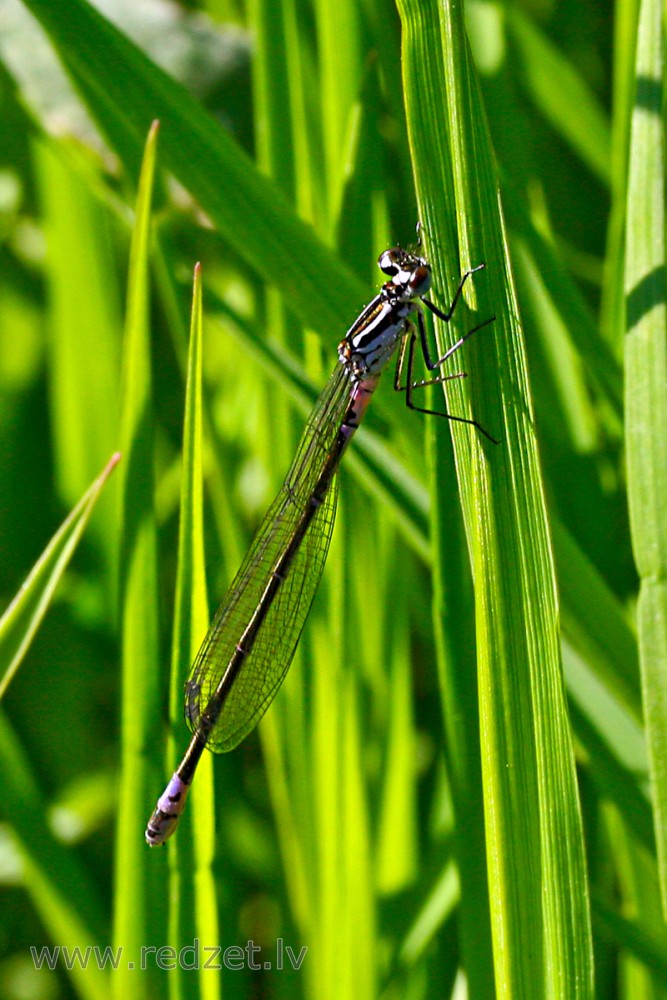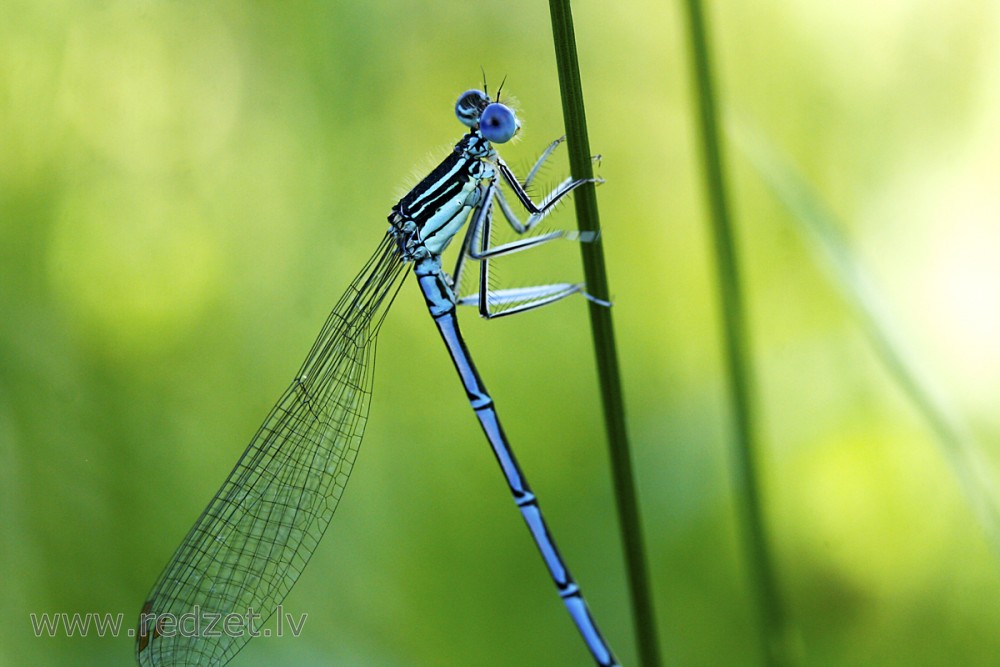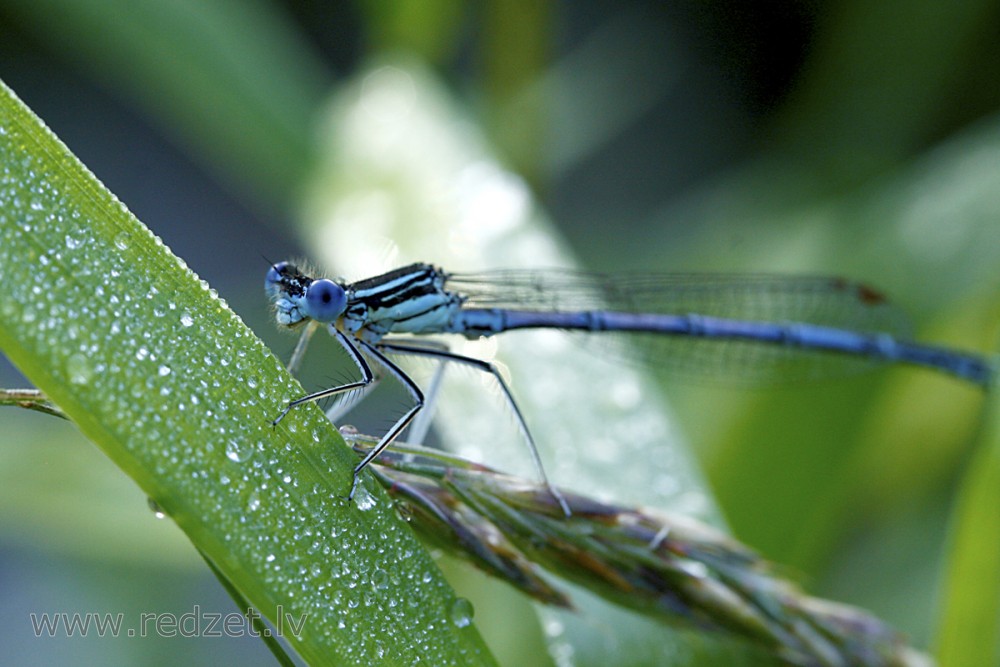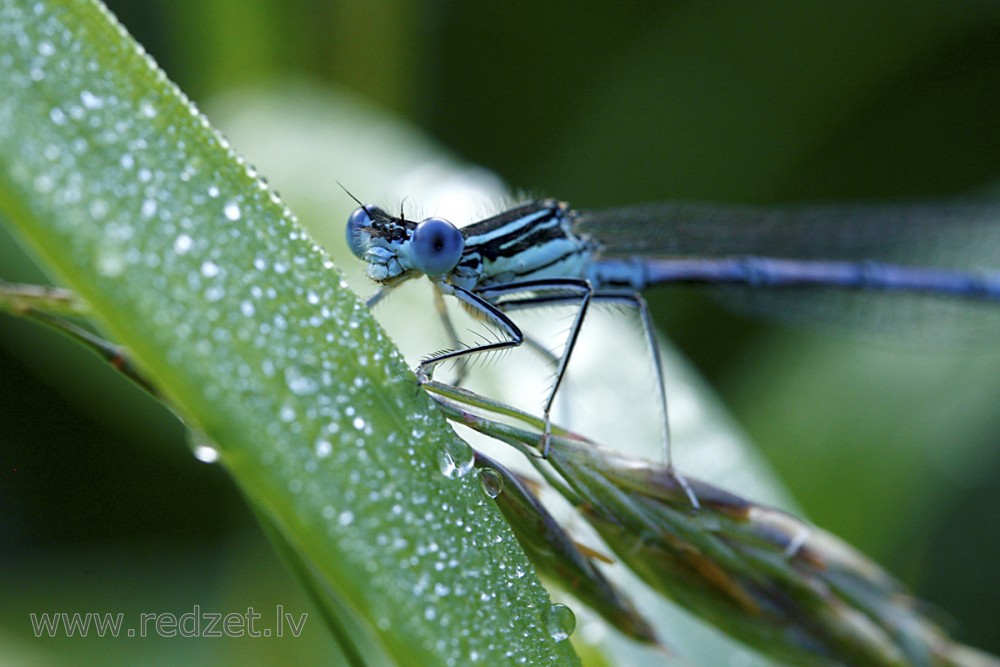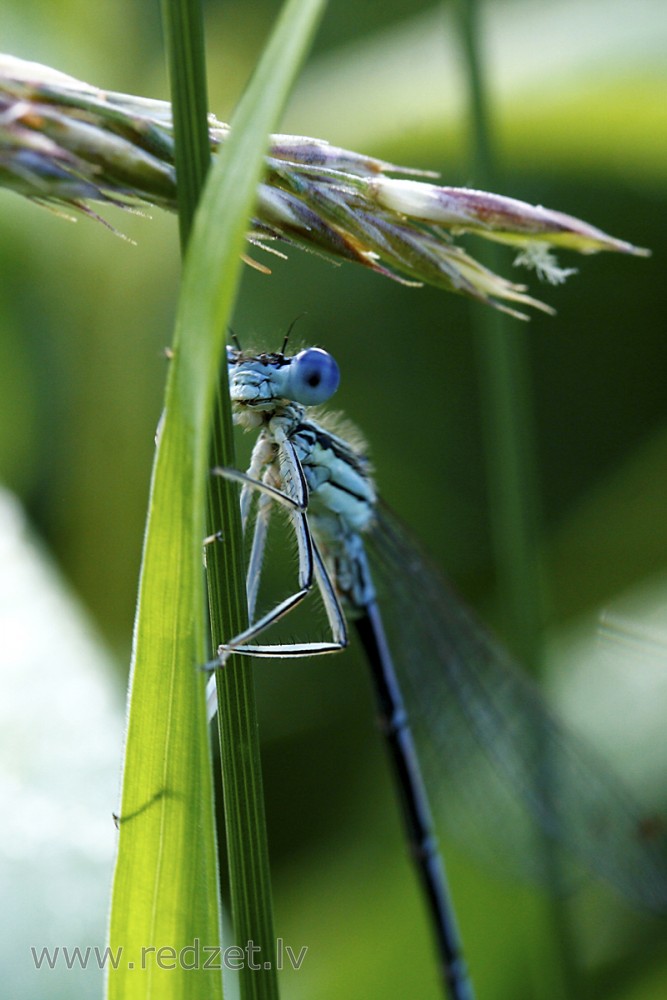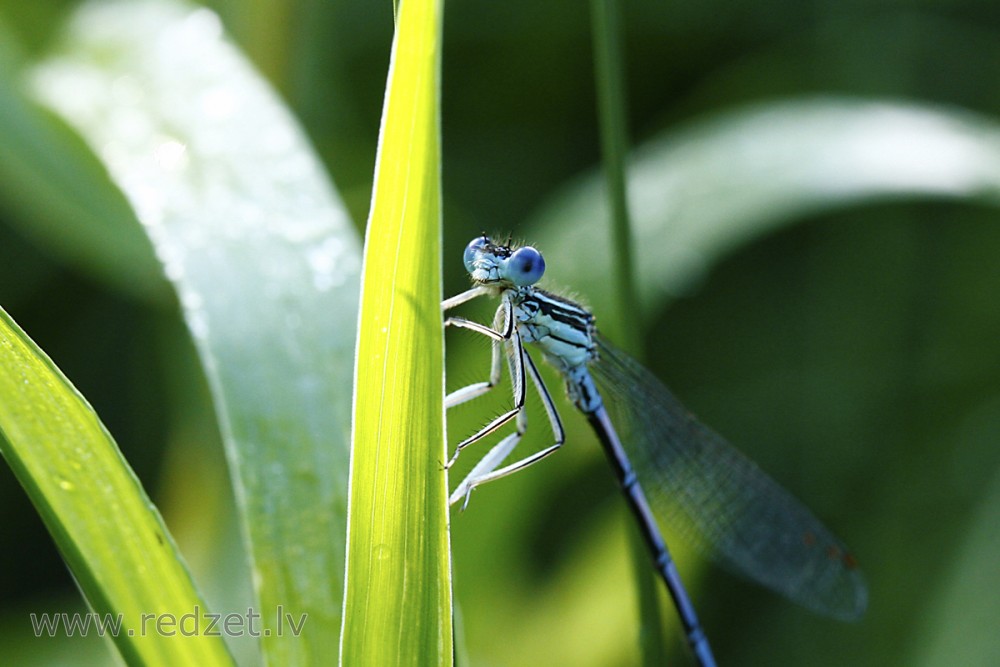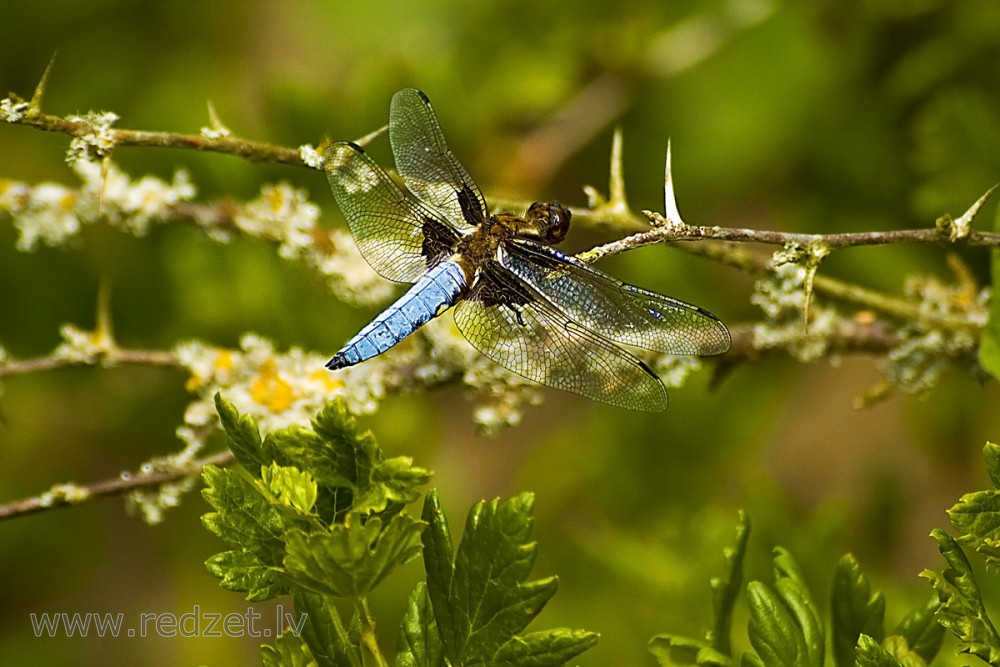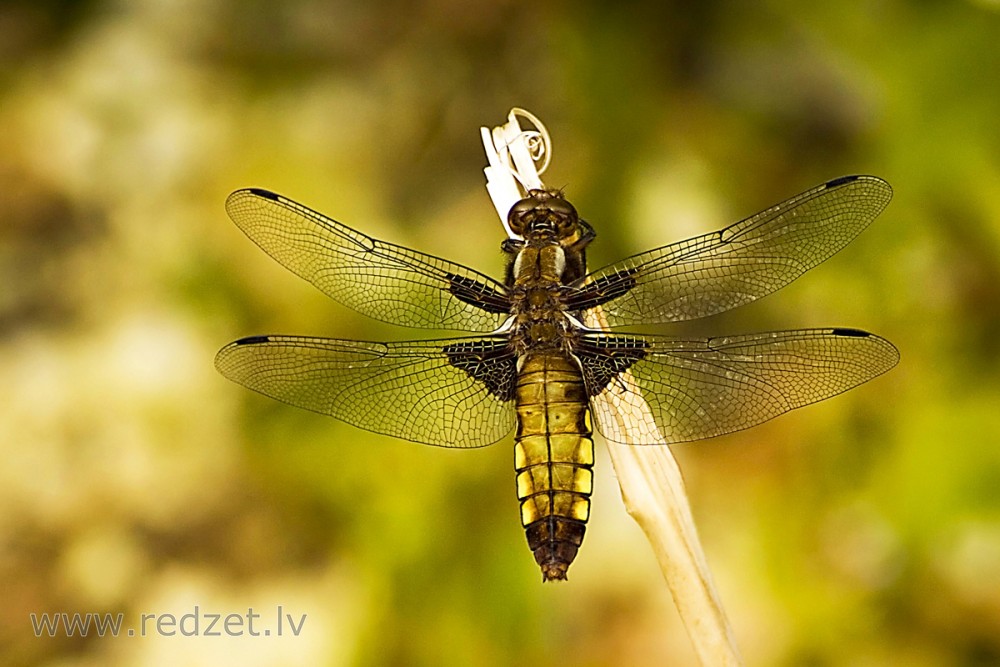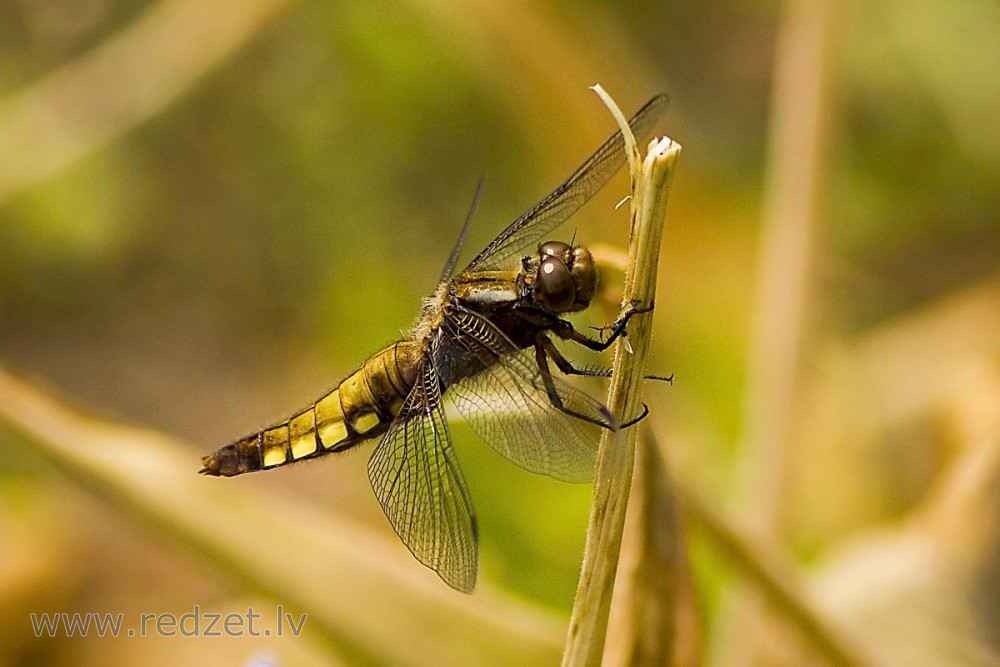Odonata
Odonata is an order of carnivorous insects, encompassing the dragonflies (Anisoptera) and the damselflies (Zygoptera). The Odonata form a clade, which has existed since the Triassic.
Dragonflies are generally larger, and perch with their wings held out to the sides; damselflies have slender bodies, and hold their wings over the body at rest.
| Odonata | |
| Kingdom: | Animalia |
| Phylum: | Euarthropoda |
| Class: | Insecta |
| Subclass: | Pterygota |
| Division: | Palaeoptera |
| Superorder: | Odonatoptera |
| (unranked): | Holodonata |
| Order: | Odonata |
| Suborders | |
| Epiprocta (dragonflies) | |
| Zygoptera (damselflies) | |
External morphology
Size
The largest living odonate is the giant Central American helicopter damselfly Megaloprepus coerulatus (Zygoptera: Pseudostigmatidae) with a wing span of 191 mm. The heaviest living odonates are Tetracanthagyna plagiata (Anisoptera: Aeshnidae) with a wing span of 165 mm, and Petalura ingentissima (Anisoptera: Petaluridae) with a body length of 117 mm (some sources 125 mm) and wing span of 160 mm. The longest extant odonate is the Neotropical helicopter damselfly Mecistogaster linearis (Zygoptera: Pseudostigmatidae) with a body length of 135 mm. Sometimes the giant Hawaiian darner Anax strenuus (Anisoptera: Aeshnidae) is claimed to be the largest living odonate with an alleged wing span of 190 mm, but this seems to be rather a myth as only 152 mm are scientifically documented.
The fossil Paleozoic "giant dragonflies" like Meganeuropsis permiana from the Permian of North America with up to 71 cm wing span and 43 cm body length have been the largest insects of all times and belonged to the order Meganisoptera, the griffinflies, related to odonates but not part of the modern order Odonata in the restricted sense.
The smallest living dragonfly is Nannophya pygmaea (Anisoptera: Libellulidae) from east Asia, which a body length of 15 mm and a wing span of 20 mm, and the smallest damselflies (and smallest odonates of all times) are species of the genus Agriocnemis (Zygoptera: Coenagrionidae) with a wing span of only 17–18 mm.
Description
These insects characteristically have large rounded heads covered mostly by well-developed, compound eyes, legs that facilitate In most families there is a structure on the leading edge near the tip of the wing called the pterostigma. This is a thickened, hemolymph–filled and often colorful area bounded by veins. The functions of the pterostigma are not fully known, but it most probably has an aerodynamic effect and may also have a visual function. More mass at the end of the wing may also reduce the energy needed to move the wings up and down. The right combination of wing stiffness and wing mass could reduce the energy consumption of flying. A pterostigma is also found among other insects, such as bees.
The nymphs have stockier, shorter, bodies than the adults. In addition to lacking wings, their eyes are smaller, their antennae longer, and their heads are less mobile than in the adult. Their mouthparts are modified, with the labium being adapted into a unique prehensile organ for grasping prey. Damselfly nymphs breathe through external gills on the abdomen, while dragonfly nymphs respire through an organ in their rectum.
Although generally fairly similar, dragonflies differ from damselflies in several, easily recognizable traits. Dragonflies are strong fliers with fairly robust bodies and at rest hold their wings either out to the side or out and downward (or even somewhat forward). Damselflies tend to be less robust, even rather weak appearing in flight, and when at rest most species hold their wings folded back over the abdomen (see photograph below, left). Dragonfly eyes occupy much of the animal's head, touching (or nearly touching) each other across the face. In damselflies, there is typically a gap in between the eyes.
Ecology and life cycle
Odonates are aquatic or semi-aquatic as juveniles. Thus, adults are most often seen near bodies of water and are frequently described as aquatic insects. However, many species range far from water. They are carnivorous throughout their life, mostly feeding on smaller insects.
Male Odonata have complex genitalia, different from those found in other insects. These include grasping cerci for holding the female and a secondary set of copulatory organs on the abdomen in which the sperm are held after being produced by the primary genitals. To mate, the male grasps the female by the thorax or head and bends her abdomen so that her own genitalia can be grasped by the copulatory organs holding the sperm. Male odonates have a copulatory organ on the ventral side of abdominal segment 2 in which they store spermatozoa; they mate by holding the female's head (Anisoptera) or thorax (Zygoptera) with claspers located at the tip of the male abdomen; the female bends her abdomen forward to touch the male organ and receive sperm. This is called the "wheel" position.
Eggs are laid in water or on vegetation near water or wet places, and hatch to produce pronymphs which live off the nutrients that were in the egg. They then develop into instars with approximately 9–14 molts that are (in most species) voracious predators on other aquatic organisms, including small fishes. The nymphs grow and molt, usually in dusk or dawn, into the flying teneral immature adults, whose color is not yet developed. These insects later transform into reproductive adults.
Odonates can act as bioindicators of water quality in rivers because they rely on high quality water for proper development in early life. Since their diet consists entirely of insects, odonate density is directly proportional to the population of prey, and their abundance indicates the abundance of prey in the examined ecosystem. Species richness of vascular plants has also been positively correlated with the species richness of dragonflies in a given habitat. This means that in a location such as a lake, if one finds a wide variety of odonates, then a similarly wide variety of plants should also be present. This correlation is not common to all bioindicators, as some may act as indicators for a different environmental factor, such as the pool frog acting as a bioindicator of water quality due to its high quantity of time spent in and around water.
en.wikipedia.org
https://en.wikipedia.org/wiki/Odonata
Continue reading